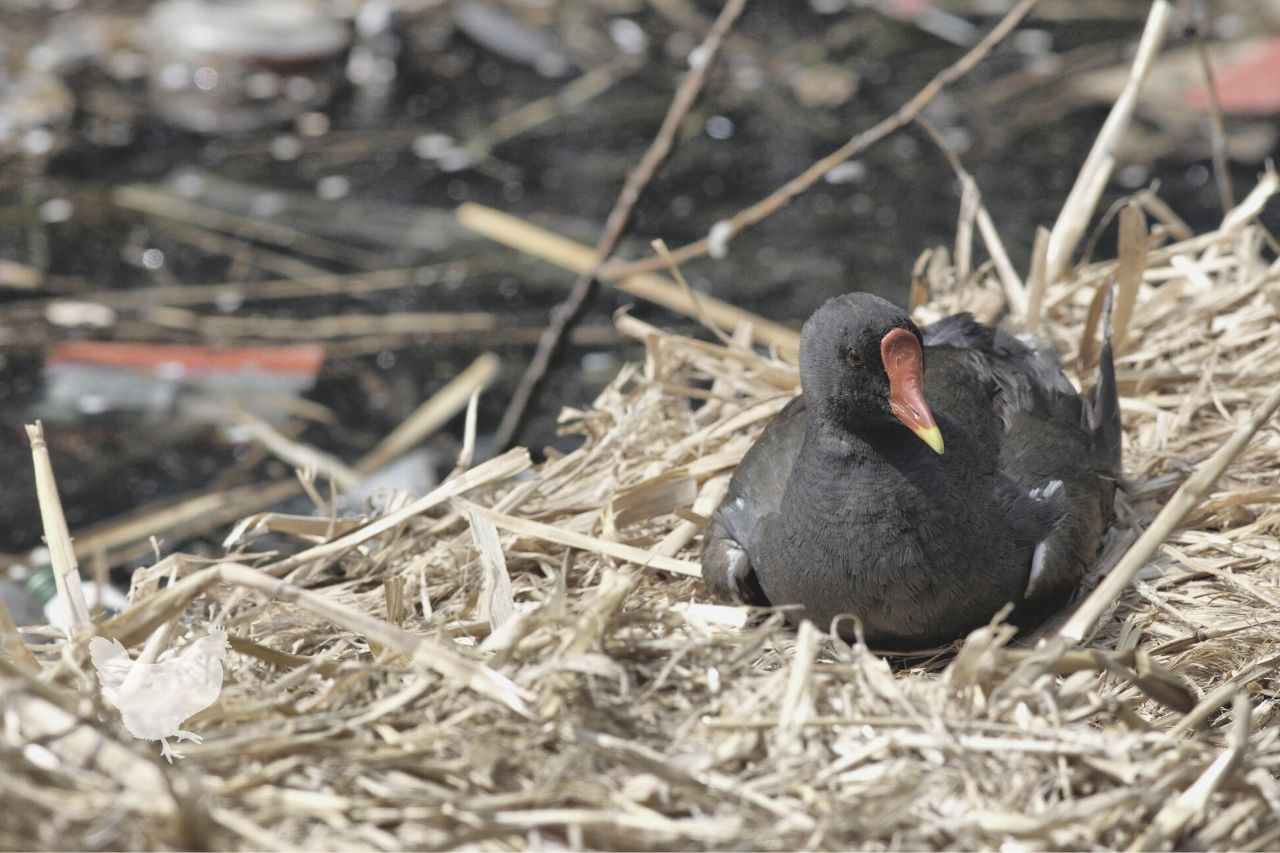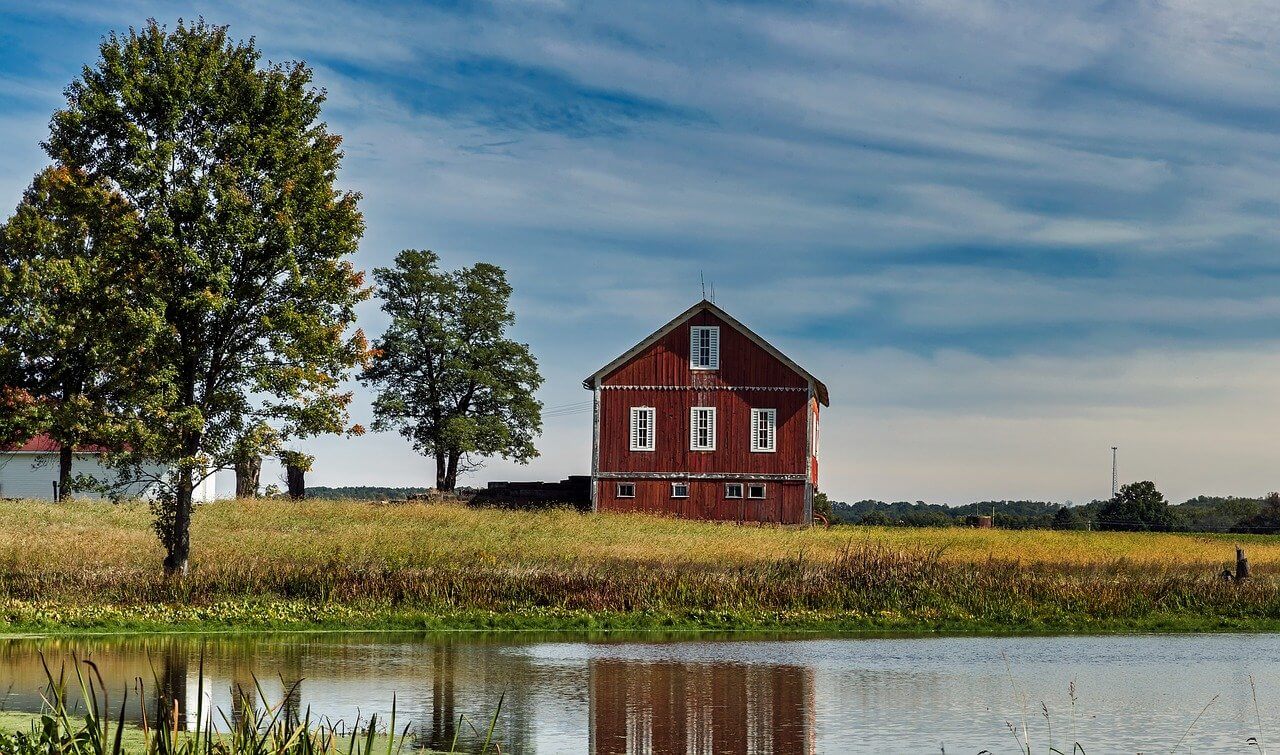Keeping the water in your pond clear and sparkling can be a real challenge in the summer months. After a few good days of sunshine, the algae will start to bloom, and before very long, your once crystal water is a green soup. But it doesn’t have to be, there is a way to help prevent this from happening, and it’s a quick and easy solution – barley straw! In this article, we will look more closely at how barley straw cleans a pond.
What You'll Learn Today
Why Put Hay Bales in a Pond?

There seems to be a bit of confusion about this, so let’s clear it up to avoid making this mistake. You don’t put hay into ponds. Hay is cut grass (and weeds) and won’t do the job of keeping your water clear.
To prevent algae, you need to use barley straw, specifically barley straw, for the job.
Algae do provide food for your fish and other aquatic life, and it also produces oxygen needed for all the creatures that live in your pond. However, having a little algae and too much algae makes a big difference.
Once algae starts to get out of control, not only will it turn the water bright green or sometimes brown, but it starts to form a mat on the surface of the water that can create unpleasant odors and even be toxic.
Oxygen Depletion
A heavy load of algae will also starve the water of oxygen rather than provide it. This is because while they produce oxygen from photosynthesis during the day, at night, they absorb oxygen which, when done in large amounts, can be fatal to your aquatic life.
This problem becomes increasingly significant when large algae populations begin dying off, as their decay uses up even more oxygen.
The best way to prevent these problems is to stop the algae from forming in the first place. This can be done using barley straw.
What Does Barley Straw Do For Your Pond?
During the 1990s, studies were carried out in the United Kingdom on the effectiveness of barley straw to prevent algae growth. Several different types of straw were used in the experiment, including wheat and rye, but none were as effective as barley straw.
The researchers discovered that the barley straw was only effective against algae and not against other plants such as pondweed, duckweed, or watermilfoil.
There are, however, many different types of algae, including two common ones found in ponds:
- Filamentous – A type that grows in hair-like strands and forms mats on the surface of the water
- Planktic – Gives the water a green soup-like appearance with its single-cell form that floats on the water
Algae is a plant-like organism that often uses photosynthesis, while some feed from organic matter present in their habitat.
It can have a very simple single-cell structure or a highly complex one, with large multicellular structures.
You won’t only find algae in ponds and swimming pools either. Many people don’t realize that some types of seaweed are algae, including Giant Kelp, a form of brown algae.
How Does Barley Straw Stop Algae?
Barley straw is a natural algistat, that is something that doesn’t kill algae but prevents its action. Things that kill algae are called algicides.
The exact way barley straw stops algae growth isn’t completely understood. The chemicals released by the rotting straw somehow inhibit the reproductive processes.
Prevention not Cure
Because barley straw doesn’t kill algae but simply stops it from growing, it must be used as a preventative measure and not just a curative one.
The limited amount of research has shown that barley straw can effectively control planktonic algae and may help clear water that has begun blooming. It has more mixed results with filamentous algae or blue-green algae.
Placing the straw into the water before any algae has started to appear is the best way to help prevent its formation.
Although barley straw is considered safe to use in the prevention of algae, some reports state that the reduction of algal growth may, in fact, encourage pond weeds and other invasive plants to grow more vigorously.
Can You Put Too Much Barley Straw in Your Pond?

To calculate how much straw to use, you will need to calculate the surface area of your pond to use as a guide.
You will require the following amount of barley straw (assuming that a bale weighs approx. 60 lbs.):
- One acre of pond area = 4 to 5 bales
- ¾ of an acre = 3 to 3 and a 1/2 bales
- ½ an acre = 2 to 2 and a ½ bales
- ¼ of an acre = 1 to 1 and a ½ bales
- 1/8 of an acre = ½ to ¾ of a bale
- 1/16 of an acre = ¼ to 3/8 of a bale
For ponds that have been badly affected by algae in the past, you can double the first figure as a maximum. For example, a one-acre pond could have eight bales or a ½ acre pond four bales.
Small backyard ponds will be fine with just a few handfuls stuffed into some fine netting.
If you overdose your pond by adding too much barley straw, then the decaying action of the straw may deoxygenate the water, causing fish and other aquatic life to die. Long spells of warm weather are more likely to have this effect due to the straw breaking down faster.
How to Use Barley Straw to Clean a Pond
Using the ratios given above as a guide, ensure that you only use thoroughly dried barley straw and not fresh cut straw.
- Netting – For best results, use something that will not rot to contain the straw, such as bird netting, onion sacks, Christmas tree netting, and so on.
- Fluffing – Open the bales and fluff up the straw inside the netting.
- Placing – Place the netted straw submerged in the water around the edge of your pond, keeping them as evenly spaced as possible.
- Small pond – If you only have a small pond, you can place a single sack in the center.
- Tie to Side – Secure the sacks to the side of the pond for easy retrieval.
- Spring – Place the sacks in the pond during early spring before too much hot sun starts to bloom the algae.
- Time Effective – The straw should stay effective for four to six months, so you may need to renew it partway through the season.
In this video, you can see how using barley straw can help to keep your pond free from algae:
Because barley straw is not a pesticide, there are generally no licensing rules on its use. It can usually be used without the need for a permit (please verify this by state).
Essentially it is considered to be a home remedy, but be aware that you will need permission if the lake is shared or for public use.
Claims cannot be made that barley straw controls algae commercially, and laws may vary state by state, so always ensure you know the rules!
Conclusion
Barley straw is a great natural way of preventing some kinds of algae from taking over your pond.
It helps keep the water clean and clear and stops it becoming more like a green swamp.
You don’t need vast amounts of barley straw to achieve an algae-free pond. Put your first batch in during early spring and ensure you renew it every four to six months.
We hope you’ve enjoyed reading the answer to “how does barley straw clean a pond” and that it will help you avoid this problem yourself. To read more articles like this one, please take a closer look at our website.
hey there, great video, very useful!!